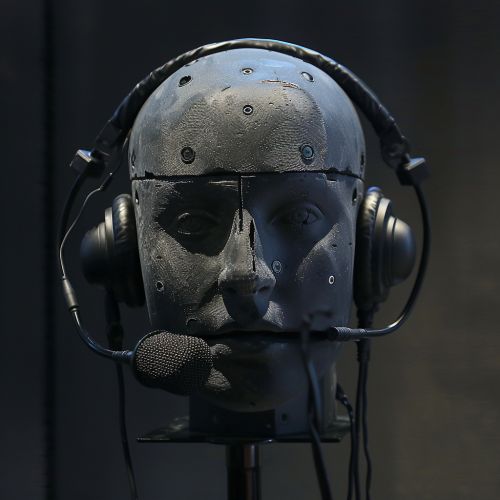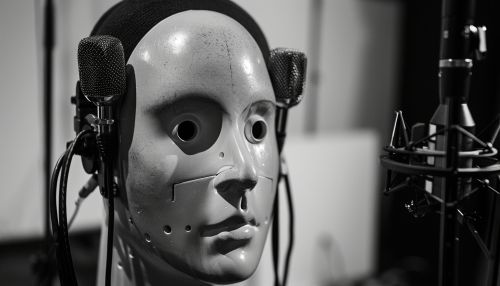Binaural Recording
Introduction
Binaural recording is an advanced audio recording technique that aims to create a three-dimensional auditory experience for the listener, closely mimicking the way humans naturally perceive sound. This method involves the use of two microphones, typically placed inside a dummy head or on a human head, to capture audio in a way that replicates the spatial characteristics of human hearing. The result is a highly immersive sound experience when played back through headphones, providing a sense of directionality and spatial depth.
History
The concept of binaural recording dates back to the late 19th century. The first known attempt was made by Clement Ader in 1881 with his "Théâtrophone" system, which used two telephone receivers to create a stereo effect. However, it wasn't until the mid-20th century that significant advancements were made, particularly with the development of high-fidelity recording equipment and the introduction of the dummy head microphone by the German company Neumann in the 1970s.
Technical Principles
Human Auditory Perception
Human auditory perception relies on the brain's ability to process differences in sound waves arriving at each ear. These differences, known as interaural time differences (ITD) and interaural level differences (ILD), help the brain determine the direction and distance of sound sources. Binaural recording aims to capture these auditory cues accurately.
Microphone Placement
In binaural recording, the placement of microphones is crucial. The microphones are typically placed inside the ear canals of a dummy head or on the ears of a human subject. This setup ensures that the recorded sound includes the natural filtering effects of the head and outer ears, known as the head-related transfer function (HRTF).
Dummy Head Microphones
Dummy head microphones are designed to replicate the human head and ears. They are often made from materials that mimic the acoustic properties of human skin and bone. The microphones are placed inside the ear canals, capturing sound in a way that closely resembles human hearing. The Neumann KU 100 is a well-known example of a dummy head microphone used in binaural recording.


Applications
Music Production
Binaural recording is increasingly used in music production to create immersive listening experiences. Artists and producers use this technique to place listeners in the middle of the soundstage, providing a sense of being present in the recording environment. This method is particularly popular in genres such as classical music, jazz, and ambient music.
Virtual Reality and Gaming
In the realm of virtual reality (VR) and gaming, binaural recording plays a crucial role in enhancing the sense of immersion. By accurately capturing spatial audio cues, binaural recordings help create realistic and engaging environments. This technology is essential for creating a convincing auditory experience in VR applications and video games.
Audiobooks and Podcasts
Binaural recording is also used in the production of audiobooks and podcasts to provide a more engaging listening experience. By capturing sound in a way that mimics natural hearing, producers can create a sense of presence and intimacy, making the content more compelling for listeners.
Sound Design and Film
In sound design and film, binaural recording is used to create realistic soundscapes. This technique is particularly useful for scenes that require a high degree of spatial accuracy, such as action sequences or scenes with complex environmental sounds. Binaural recordings can enhance the viewer's sense of immersion and make the auditory experience more lifelike.
Technical Challenges
Playback Compatibility
One of the primary challenges of binaural recording is ensuring playback compatibility. Binaural recordings are designed to be listened to through headphones, as this setup preserves the spatial characteristics of the sound. However, when played through speakers, the spatial effects can be lost or distorted.
Recording Environment
The recording environment plays a significant role in the quality of binaural recordings. Factors such as room acoustics, background noise, and microphone placement can all affect the final result. Achieving high-quality binaural recordings often requires careful planning and control of the recording environment.
Individual HRTF Variability
Another challenge is the variability in individual HRTFs. Since each person's head and ears are unique, the HRTF for one individual may not perfectly match another's. This variability can affect the perceived spatial accuracy of binaural recordings. Some advanced systems allow for customization of HRTFs to better match individual listeners.
Future Developments
Personalized Binaural Audio
Future developments in binaural recording may focus on personalized audio experiences. By using advanced measurement techniques and algorithms, it may become possible to create customized HRTFs for individual listeners, enhancing the spatial accuracy and realism of binaural recordings.
Integration with Augmented Reality
As augmented reality (AR) technology advances, binaural recording is likely to play a significant role in creating immersive audio experiences. By integrating binaural audio with AR applications, developers can create more engaging and realistic environments, enhancing the overall user experience.
Advances in Microphone Technology
Ongoing advancements in microphone technology may also improve the quality and accessibility of binaural recording. New materials and designs could lead to more accurate and affordable dummy head microphones, making binaural recording more accessible to a wider range of users.
